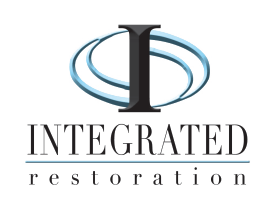Leaves, Leaks, and Lasting Damage: Why Clean Gutters Matter for Cleveland Homes
Fall in Cleveland means colorful trees, crisp air—and plenty of leaves in your gutters. While they may seem harmless, clogged gutters can create serious problems for your home’s exterior and interior. Overflowing water doesn’t just spill over the edges—it can back up under shingles, soak into siding, or pool near your foundation.
At Integrated Restoration, we’ve seen what happens when a simple gutter cleaning turns into a major water damage repair. Here’s how to keep your gutters clear, your home protected, and what to do if you notice signs of damage.
Why Gutters Are So Important
Your gutters have one main job: to direct water away from your home. When they’re clogged, that water looks for the next easiest path—which often means into your roof, walls, or basement.
Cleveland’s mix of heavy fall rain, snowmelt, and older housing stock makes functional gutters essential for:
Preventing roof leaks and attic moisture
Protecting siding, fascia, and soffits from rot
Avoiding basement flooding and foundation cracks
Reducing mold and mildew growth in damp areas
Without proper flow, your gutters can cause more damage than they prevent.
When Gutters Stop Draining, Water Starts Spreading
Leaves, twigs, and debris can block downspouts quickly. Once that happens, rainwater collects and overflows, damaging your home’s exterior. It can also find hidden entry points under shingles or siding, leading to leaks inside walls and ceilings.
What to watch for:
Water spilling over the sides of gutters during rain
Sagging or pulling away gutters
Stains on siding or fascia boards
Wet spots in the attic after storms
If you notice any of these, check your gutters immediately—or call a professional before minor issues become water damage emergencies.
Exterior Damage: Roof, Siding, and Fascia
When water can’t drain properly, it seeps into places it shouldn’t. Over time, that can lead to:
Roof damage: Water backs up under shingles and deteriorates roof decking.
Siding damage: Overflowing gutters stain or warp siding and trap moisture behind panels.
Fascia and soffit rot: Constant dampness causes wood to soften and decay.
If you’re already seeing signs of damage—peeling paint, discoloration, or warped materials—your home may need exterior restoration to repair the affected areas.
Interior Damage: The Hidden Threat
Water that sneaks inside your home often goes unnoticed until it’s too late. Once moisture gets behind walls or under floors, it can lead to:
Ceiling stains or bubbling paint
Musty odors or visible mold
Cracks or seepage along basement walls
When that happens, you may need both water damage repair and mold remediation to fully address the problem.
How to Clean Your Gutters Yourself (Safely)
If your home is one or two stories and your gutters are easy to reach, you may be able to clean them yourself a couple of times per year.
Step-by-step:
Use a sturdy ladder and have a spotter if possible.
Wear gloves and scoop debris out by hand or with a gutter scoop.
Flush gutters and downspouts with a hose to clear smaller blockages.
Check for leaks at joints or seams while flushing.
Inspect your roofline for sagging or separation.
Safety tip: Never lean your ladder directly on the gutter, and avoid DIY cleaning if your home is tall, steep, or surrounded by power lines.
When to Call a Professional
Sometimes, a clogged gutter is just the surface symptom. If you see sagging gutters, persistent overflow, or water damage on your roof or siding, it’s best to call a restoration professional.
Professionals can:
Identify hidden water damage inside walls or roof structures
Repair or replace sections of damaged gutter or fascia
Recommend long-term prevention, like gutter guards or improved drainage
At Integrated Restoration, our team helps Cleveland homeowners repair storm-related gutter damage and inspect for underlying moisture problems before they lead to costly restoration projects.
What to Do If You Spot Signs of Damage
If you notice stains, leaks, or wood rot near your gutters, take action right away:
Document the damage with photos (useful for insurance claims).
Schedule an inspection to determine if water has entered your home’s structure.
Get repairs completed before winter. Freeze-thaw cycles can worsen existing cracks and leaks.
If damage has already spread indoors, our Cleveland restoration team can assess your home and provide a plan for repair and prevention.

